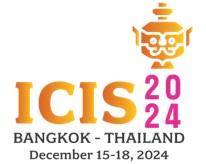Paper Number
3162
Paper Type
Complete
Abstract
Previous research on physical settings typically associates order with better behavior and clutter with problematic outcomes. As society further drifts into a digital world, either by voluntarily moving into the metaverse or by being forced to do so by the COVID-19 pandemic, order vs. clutter on the screens of our devices becomes increasingly more relevant. To test how sensitive user behavior is to the online surroundings, we developed two prototypes of an orderly vs. a cluttered website and conducted an experiment with 120 participants. The results show that cluttered online environment leads to higher levels of perceived disorder, information overload and strain, but also to higher creativity when measured with the Alternative Uses task. Attention, food choices and charitable behavior of users did not differ significantly in orderly vs. cluttered online environment. Finally, we formulate recommendations for the design of digital interfaces and for user behavior.
Recommended Citation
Abramova, Olga and Voronin, Georg, "Effects of an orderly vs. cluttered online environment on user behavior and choices" (2024). ICIS 2024 Proceedings. 36.
https://aisel.aisnet.org/icis2024/user_behav/user_behav/36
Effects of an orderly vs. cluttered online environment on user behavior and choices
Previous research on physical settings typically associates order with better behavior and clutter with problematic outcomes. As society further drifts into a digital world, either by voluntarily moving into the metaverse or by being forced to do so by the COVID-19 pandemic, order vs. clutter on the screens of our devices becomes increasingly more relevant. To test how sensitive user behavior is to the online surroundings, we developed two prototypes of an orderly vs. a cluttered website and conducted an experiment with 120 participants. The results show that cluttered online environment leads to higher levels of perceived disorder, information overload and strain, but also to higher creativity when measured with the Alternative Uses task. Attention, food choices and charitable behavior of users did not differ significantly in orderly vs. cluttered online environment. Finally, we formulate recommendations for the design of digital interfaces and for user behavior.
When commenting on articles, please be friendly, welcoming, respectful and abide by the AIS eLibrary Discussion Thread Code of Conduct posted here.



Comments
21-UserBehavior